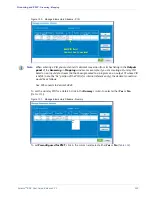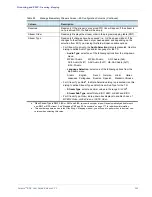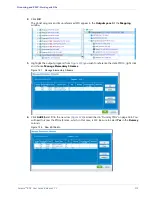
Selenio
TM
BNP User Guide, Release 3.7.1
167
- Working with PIDs
Adding an Unreferenced PID as an Elementary Stream
You can add an unreferenced PID to an input transport stream. This allows you to manage
unreferenced PID inputs for various applications in the BNP output. Unreferenced PID streams are
those MPEG-2 elementary streams encapsulated in the MPEG-2 SPTS or MPTS, whose PIDs are not
referenced in any PSI (PAT and PMT) tables. These unreferenced PID streams may be purposely inserted
for some special control and applications; they could also result from the stream originator's error.
Unreferenced PIDs can come from the program inputs from GigE interfaces or from ASI inputs. In some
applications, these unreferenced PIDs need to be routed to the appropriate output GigE ports or ASI
ports as pass-through, or with-or-without the PIDs being remapped. In other cases, these unreferenced
PIDs need to be dropped, either because such unreferenced PIDs are not required or the streams are
corrupted.
Use the
Create Ghost Program
function to add an unreferenced PID as an ES.
Menu Path
From the
Inputs
panel of the
Grooming -> Mapping
tab screen, right-click on a
transport stream and select
Create Ghost Program
from the popup-menu (
).
Figure 109. Creating an Input Ghost Program
1.
Enter the
Ghost Program Name
.
2.
Click
OK
. A new program stream is now displayed in
the
Inputs
column for the TS.
3.
Right click the new Ghost Program you have created,
and choose
Add Elementary Stream
(
) to
present the
Add Elementary Stream
dialog (for single
or multiple ES).
Figure 110. Adding an Elementary Stream






























